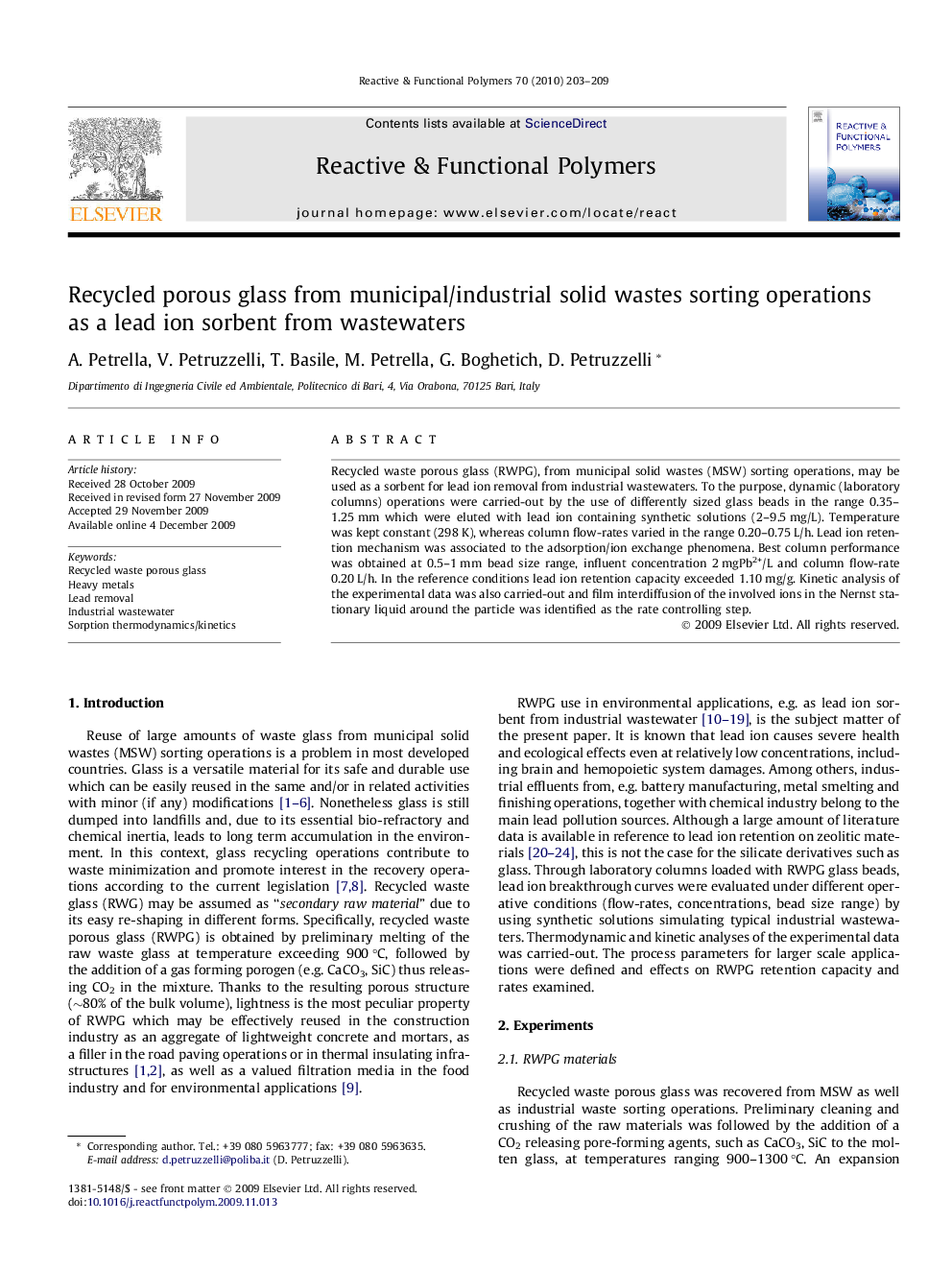| Article ID | Journal | Published Year | Pages | File Type |
|---|---|---|---|---|
| 5210774 | Reactive and Functional Polymers | 2010 | 7 Pages |
Abstract
Recycled waste porous glass (RWPG), from municipal solid wastes (MSW) sorting operations, may be used as a sorbent for lead ion removal from industrial wastewaters. To the purpose, dynamic (laboratory columns) operations were carried-out by the use of differently sized glass beads in the range 0.35-1.25Â mm which were eluted with lead ion containing synthetic solutions (2-9.5Â mg/L). Temperature was kept constant (298Â K), whereas column flow-rates varied in the range 0.20-0.75Â L/h. Lead ion retention mechanism was associated to the adsorption/ion exchange phenomena. Best column performance was obtained at 0.5-1Â mm bead size range, influent concentration 2Â mgPb2+/L and column flow-rate 0.20Â L/h. In the reference conditions lead ion retention capacity exceeded 1.10Â mg/g. Kinetic analysis of the experimental data was also carried-out and film interdiffusion of the involved ions in the Nernst stationary liquid around the particle was identified as the rate controlling step.
Related Topics
Physical Sciences and Engineering
Chemistry
Organic Chemistry
Authors
A. Petrella, V. Petruzzelli, T. Basile, M. Petrella, G. Boghetich, D. Petruzzelli,
